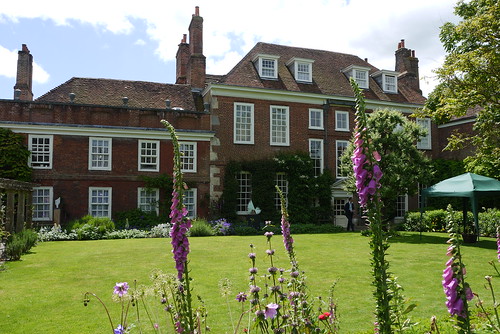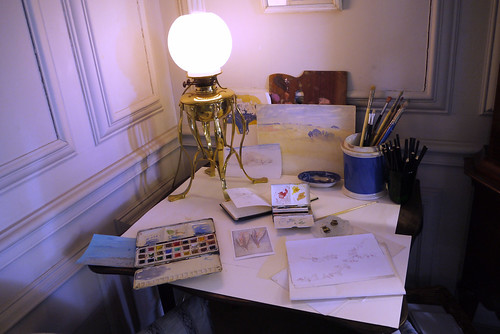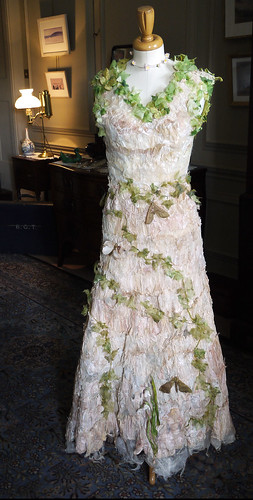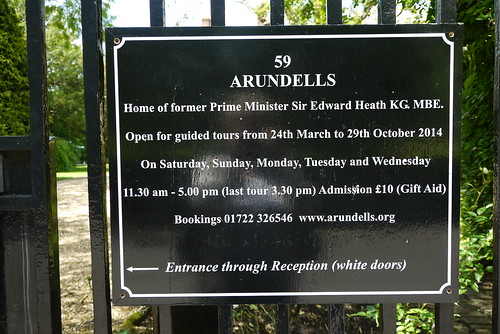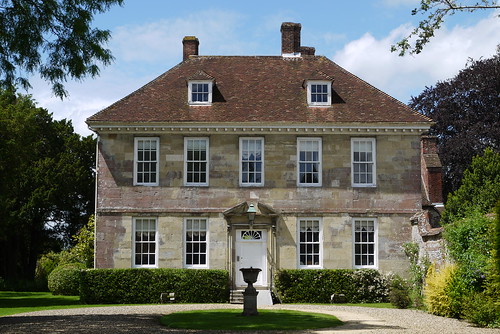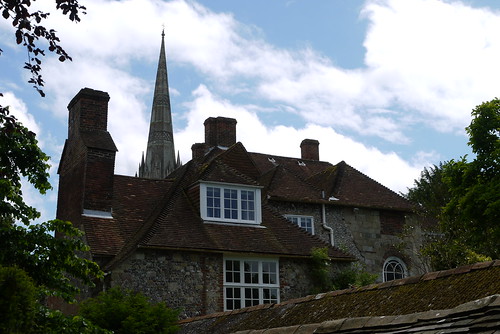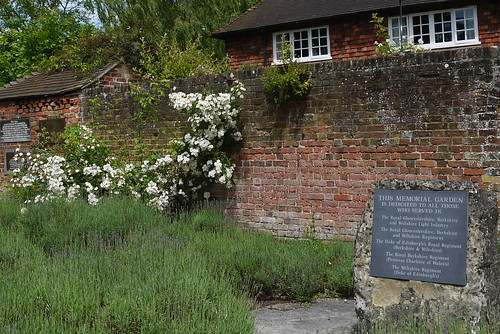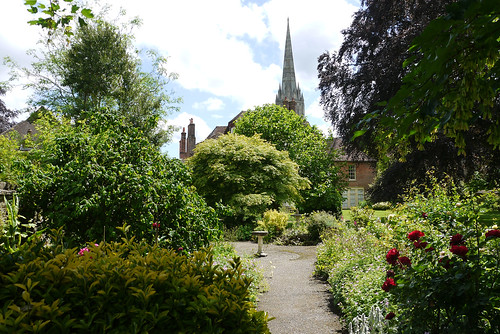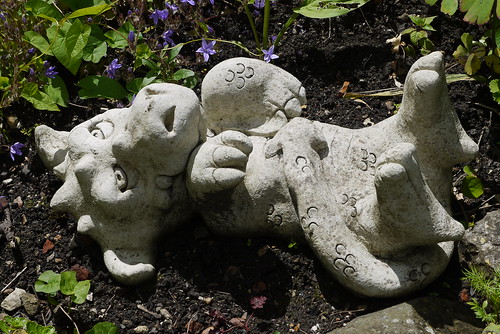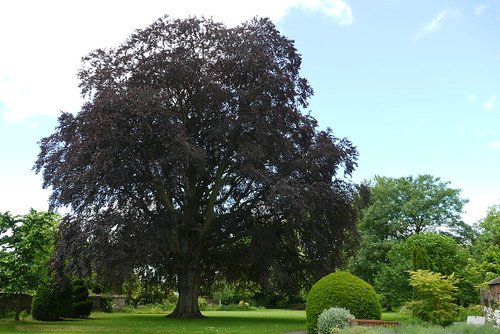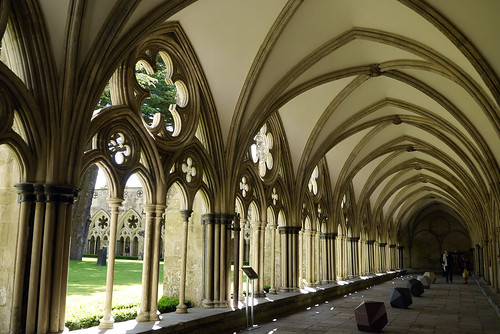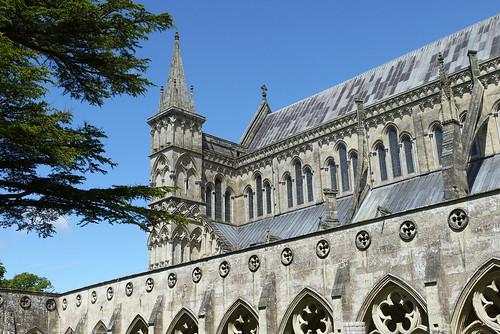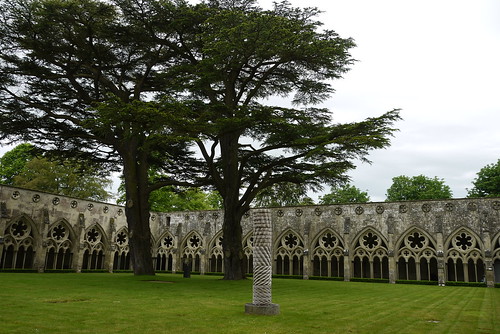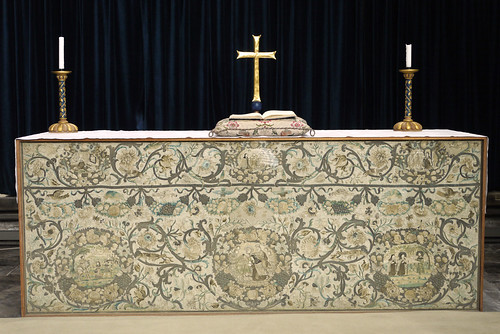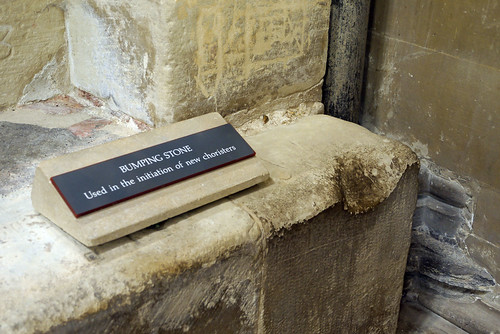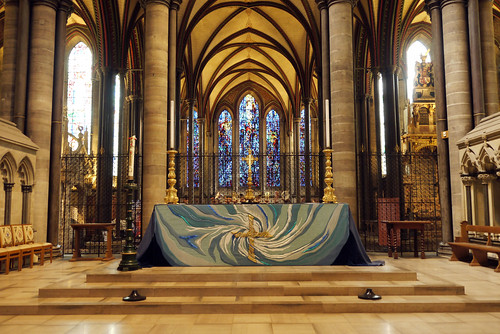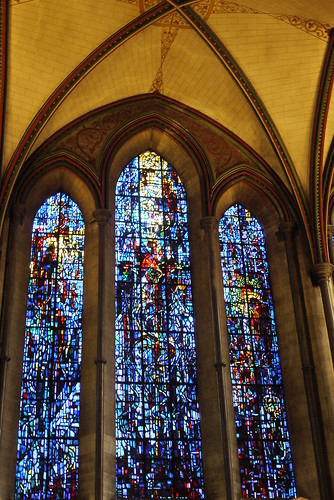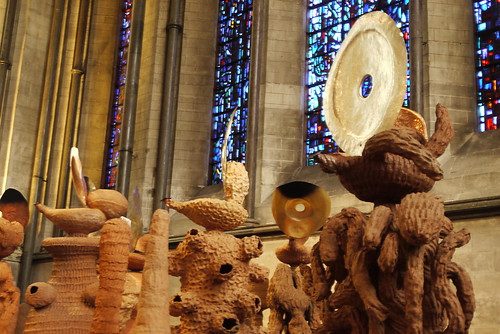
This artwork of terracotta figures by Nicholas Pope is currently situated in the Trinity Chapel at Salisbury Cathedral.
The Apostles Speaking in Tongues Lit by Their Own Lamps is a dramatic re-enactment of events narrated in the New Testament. On the Jewish feast of the Pentacost, the Holy Spirit was said to have come upon the Apostles in Jerusalem enabling them to speak in tongues to all those present. The Holy Spirit descends amidst a ‘rushing mighty wind’ and appears in the form of ‘cloven tongues of fire’. Nicholas Pope’s Apostles are likewise the bearers of fire. Made in brick clay of earth-colours, each figure supports a primitive oil-lamp backed by a halo of beaten metal. The lamps provide a pulsating glow which is reflected from the polished metal.
Just like individuals who make up the average Anglican community – the clergy, the parish council, the parishioners – the twelve apostles came from ordinary walks of life, from agriculture, teaching, the world of commerce. Like members of the congregation, some were good and trusting souls, others turned out to be less wholesome. Pope doesn’t take a neutral view of the twelve. His figures are breathtaking and imposing but at the same time they include aspects of the hideous and the comical. Each figure is identified by his attributes: Doubting Thomas sports trunk-like bloodsucking appendages; Mathew, a tax-collector, carries a heavy paunch while the two-faced Judas has fleshy protruding lips.*
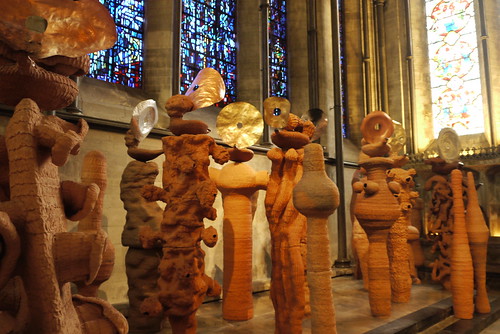
Acts 2:1-6:
And when the day of Pentecost was fully come, they were all with one accord in one place. And suddenly there came a sound from heaven as of a rushing mighty wind, and it filled all the house where they were sitting. And there appeared unto them cloven tongues like as of fire, and it sat upon each of them. And they were all filled with the Holy Spirit, and began to speak with other languages, as the Spirit gave them utterance. And there were dwelling at Jerusalem Jews, devout men, out of every nation under heaven. Now when this was noised abroad, the multitude came together, and were confounded, because that every man heard them speak his own language.
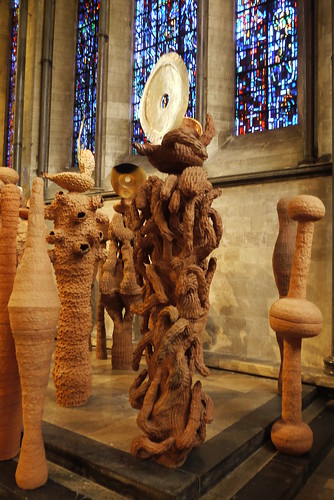
*From a Salisbury Cathedral leaflet on the exhibition

